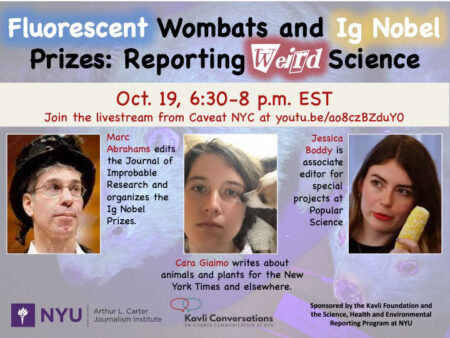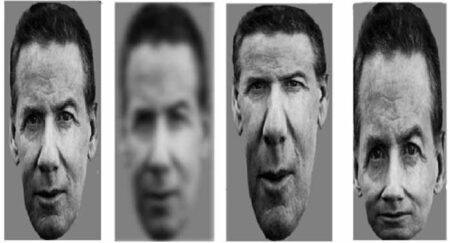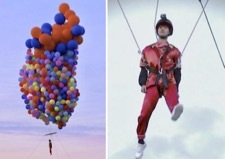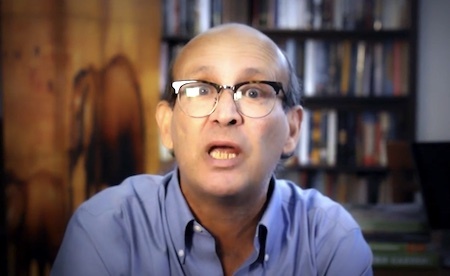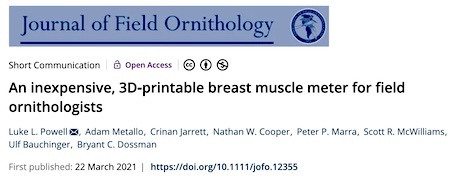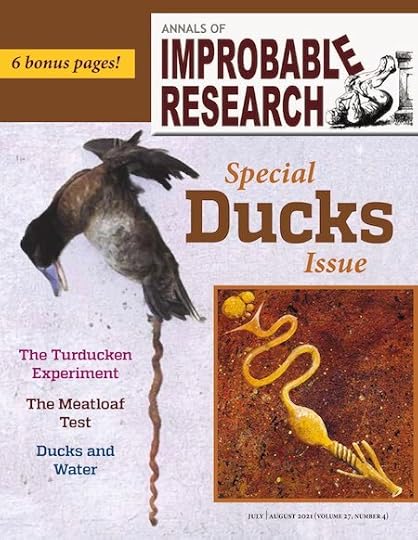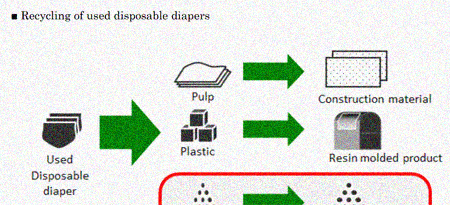Marc Abrahams's Blog, page 69
October 21, 2021
Obesity of Politicians, Corruption in Countries: 2021 Ig Informal Lecture
The Ig Nobel Prizes honor achievements that make people LAUGH, then THINK.
In the Ig Informal Lectures, some days after the ceremony, the new Ig Nobel Prize winners attempt to explain what they did, and why they did it. We are releasing these lectures one at a time.
The 2021 Ig Nobel for Economics was awarded to Pavlo Blavatskyy, for discovering that the obesity of a country’s politicians may be a good indicator of that country’s corruption.
REFERENCE: “Obesity of Politicians and Corruption in Post‐Soviet Countries,” Pavlo Blavatskyy, Economic of Transition and Institutional Change, vol. 29, no. 2, 2021, pp. 343-356.

October 18, 2021
Webcast: Discussion About Writing About Weird Science
Join us — Tuesday night, October 19, 2021, Tuesday, 6:30-8:00 pm. (US Eastern time) — for a livestreamed discussion by Marc Abrahams, Cara Giaimo, and Jessica Boddy about “Reporting Weird Science—from fluorescent wombats to the Ig Nobel Prizes”.
The event, for students in the Science, Health & Environmental Reporting program (SHERP) at New York University (NYU), is part of a series called the Kavli Conversations on Science Communication (KCOSC) at NYU.
The talkers, together with SHERP students, will be gathered in pandemically fairly safe conditions at Caveat NYC, a spacious cabaret-style speakeasy theater thought to be 75% resistant to acronyms.

Stretched faces remarkably easy to recognize [study]
It can be difficult to recognize someone from a photo of their face if it’s turned upside-down, or presented as a negative. But what if the photos are distorted – fairground-mirror style? Or deliberately blurred?
To find out, Dr Graham Hole and colleagues at the School of Cognitive and Computing Sciences, University of Sussex, UK, performed a set of experiments.
Finding (amongst other things) that :
Global linear transformations seem to affect recognition remarkably little, considering the extent to which they distort the spatial relationships within a face, which are presumed to be critical for recognition. Recognition was impaired, however, when vertical stretching was applied nonglobally (ie to only half of the face).
See: Effects of Geometric Distortions on Face-Recognition Performance, Volume: 31, issue: 10, pages 1221-1240. (A full copy of which may be found here)

October 17, 2021
Podcast Episode #1083: “Faces and Smoked Ham”
In Podcast Episode #1083, Marc Abrahams shows an unfamiliar research study to biomedical researcher Chris Cotsapas. Dramatic readings and reactions ensue.
Remember, our Patreon donors, on most levels, get access to each podcast episode before it is made public.
Chris Cotsapas encounters:
“Consumer Facial Expression in Relation to Smoked Ham With the Use of Face Reading Technology. The Methodological Aspects and Informative Value of Research Results,” Eliza Kostyra, Bożena Waszkiewicz-Robak, Wacław Laskowski, Tadeusz Blicharski, and Ewa Poławska, Meat Science, vol. 119, September 2016, pp. 22–31.
Seth Gliksman, Production Assistant
Available on Spotify, Apple Podcasts, Overcast, Google Podcasts, AntennaPod, BeyondPod and elsewhere!

October 14, 2021
Another TV Show ‘Inspired’ by the Ig Nobel Prizes
Zaobao reports, on October 11, 2021:
In recent years, many Chinese variety shows have been draft talents. Zhejiang Satellite TV has taken a different approach. In mid-August, it launched a real-life show “Hi Release”. Wang Jiaer, Ren Jialun and Chen Feiyu served as “Hi Release Explorers”. Li Ronghao ( Participated in the fifth period of recording), Wei Daxun (joined in the fifth period) is the “Hi Broadcast Specialist”. Artist guests include Li Chen, Zheng Kai and Jike Junyi. “Hi” is inspired by the “Ig Nobel Prize“, which is dedicated to exploring scientific research that “makes people laugh at first glance, but is thought-provoking after thinking about it”. The program uses life as the soil and science as the entry point, revealing unexpected scientific conclusions through some seemingly nonsensical experiments.
UPDATE (October 15, 2021): And a report by Giaoduc about a law school competition in Vietnam: “Happy Law Competition (abbreviated as ‘Ig Law’) is inspired by the Ig Nobel Prize“

October 13, 2021
Data poetry: Ode to The General Index
In this six-minute-long impassioned video, Carl Malamud draws on his considerable poetical and performance skills to introduce The General Index:
What is The General Index, and how can it benefit you? The answer, some of it in the form of questions, is in the video.
Here, to whet your appetite for viewing the video, are some passionate phrases from it, and from the documentation about it:
Topics—Access to Knowledge, Text and Data Mining, Temples of Knowledge, General Index
Language—Science is our universal language.
Public Resource, a registered nonprofit organization based in California, has created a General Index to scientific journals. The General Index consists of a listing of n-grams, from unigrams to five-grams, extracted from 107 million journal articles.
The General Index is non-consumptive, in that the underlying articles are not released, and it is transformative in that the release consists of the extraction of facts that are derived from that underlying corpus. The General Index is available for free download with no restrictions on use. This is an initial release, and the hope is to improve the quality of text extraction, broaden the scope of the underlying corpus, provide more sophisticated metrics associated with terms, and other enhancements.
Access to the full corpus of scholarly journals is an essential facility to the practice of science in our modern world. The General Index is an invaluable utility for researchers who wish to search for articles about plants, chemicals, genes, proteins, materials, geographical locations, and other entities of interest. The General Index allows scholars and students all over the world to perform specialized and customized searches within the scope of their disciplines and research over the full corpus.
Access to knowledge is a human right and the increase and diffusion of knowledge depends on our ability to stand on the shoulders of giants.

October 12, 2021
Headline writing is for the birds?
Ambiguity comes easily when one writes headlines, sometimes. Here’s an example:
“An inexpensive, 3D‐printable breast muscle meter for field ornithologists,” Luke L. Powell, Adam Metallo, Crinan Jarrett, Nathan W. Cooper, Peter P. Marra, Scott R. McWilliams, Ulf Bauchinger, and Bryant C. Dossman, Journal of Field Ornithology, vol. 92, no. 1, March 1, 2021, pp. 67-76. (Thanks to Walter Berry for bringing this to our attention.)

October 11, 2021
National Funeral Directors Association Leadership Conference at Walt Disney World
“So here’s the thing. Flight, taxes, death – they’re all connected to this event”
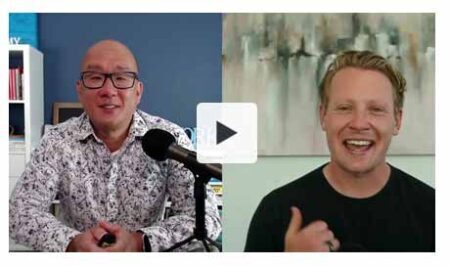 explains the video for the National Funeral Directors Association Leadership Conference 2021.
explains the video for the National Funeral Directors Association Leadership Conference 2021.
The bad news is that the deadline to attend the event has now expired. The good news is that there’s still time to book for the 2022 event – which will be held on July 10-13, 2022 at Walt Disney World’s Yacht & Beach Club Resort in Orlando, Florida.
“This event will leave you inspired, invigorated, and ready to take on the issues of the day!“

October 8, 2021
The special Ducks issue of the Improbable magazine
The special Ducks issue (volume 27, number 4) of the magazine, Annals of Improbable Research, has flown its way to subscribers. This special issue, like many other special issues of the magazine, is also available for purchase. All the issues are in the form of downloadable PDFs.
Are you a Duck?Unless you yourself are a duck, and an unusual duck at that, you are likely to discover many surprising things about ducks, if you read the issue, an activity which, the educational system being what it is in 2021, is probably more likely if you are not a duck than if you are a duck. The previous sentence was a long, multi-part sentence.
Research About DucksThe special Ducks issue includes these articles about duck research (and includes many other articles, about research about other things):
Walk Like a Duck?Uranium for Ducks, Please
Ducks and Walking
Steaming and Dabbling
Ducks and Water
May We Recommend: Duck Death by Spaghetti
The Turducken Experiment
Duck or Not Duck?
Ducks’ Body Parts
Duck Droppings
The special Ducks issue begins, as some of our issues do, with an article called “Ways to Use This Magazine“. One of those ways is to write a limerick about one of the cited studies. To get you started, the article assaults you with this limerick about the study “Higher Heritabilities for Gait Components than for Overall Gait Scores May Improve Mobility in Ducks,” which is featured in the magazine:
DUGGAN, RAE, CLEMENTS, AND HOCKING
REPORT THAT IT’S NOT AT ALL SHOCKING
THAT PEOPLE CAN RATE SOME
ASPECTS OF GAIT
OF DUCKS AS THE DUCKS DO SOME WALKING.

October 7, 2021
A Boost for Recycling USED Disposable Diapers
The future is increasingly shiny for used disposable diapers, suggests this November 5, 2020 press release from the Nippon Shokubai company of Fukuoka, Japan. It says:
“The Ministry of Land, Infrastructure, Transport and Tourism (MLIT) [is] aiming to establish a guideline for the acceptance of used disposable diapers into the sewage system based on the New Sewerage Vision Acceleration Strategy. Recycling of used disposable diapers, the amount of which continues to increase, is thus expected to be promoted.”
(Thanks to Ryoma Komiyama for bringing this to our attention.)

Marc Abrahams's Blog
- Marc Abrahams's profile
- 14 followers


